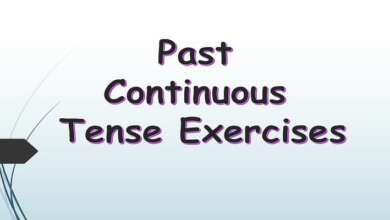Present Perfect Continuous Tense (Rules, Examples) PDF
Present Perfect Continuous Tense
Present Perfect Continuous Tense with Rules, Formula & Examples (Download PDF) – Present Perfect Continuous tense shows that the action has been in continuous for a certain time, and time is given in the sentences. To understand carefully, we have given all types of examples like affirmative, WH questions, negative, and interrogative sentences with examples and rules, so that you can easily understand them.
Now see how to make sentences for Present Perfect Continuous tense, what its rules, examples, and how to make them while making the sentence, so let’s start.
First of all, we know the basic rules and formulas.
Formula –
- Affirmative – Sub + Has/have + been + Verb (+ing) + Obj.
- Negative – Sub + Has/have not + been + Verb (+ing) + Obj.
- Interrogative – Has/have + Sub + been + Verb (+ing) + Obj.
- WH Questions – WH + Has/have + Sub + been + Verb (+ing) + Obj.
Point to be remembered:-
- Since is used before the point of time. Like (since 1980, since March, since Monday, since 5 o’clock, since morning/evening/midnight/afternoon/childhood, etc).
- For is used before the period of time. Like (for 5 years, for two days, for five minutes, for three weeks, for a long time, for many days, etc).
1. Affirmative Present Perfect Continuous Tense
Read the rules carefully given below:
- In the Present Perfect Continuous tense, we use has/have been + 1st form of the main verb + ing.
- When the subject is I, you, we, they, or some plural number, we use have been + 1st form of the main verb + ing.
- When the subject is he, she, it, or some singular number, we use has been + 1st form of the main verb + ing.
The formula for Affirmative sentences.
Sub + Has/have + been + Verb (+ing) + Obj.
We have given below 15 examples of Affirmative sentences for Present Perfect Continuous Tense so that you can easily understand them.
Examples –
- She has been reading for two hours.
- He has been writing a letter for an hour.
- We have been walking for two hours.
- I have been working for two hours.
- I have been waiting for you for two hours.
- We have been living here for three years.
- It has been drizzling since last Sunday.
- She has been crying since morning.
- I have been feeling giddy since morning.
- The washerman has been ironing the clothes since 4 o’clock.
- You have been putting me off for a month.
- The clouds have been thundering since this evening.
- The tap has been running for two hours.
- We have been reading in this school for many years.
- He has been walking since morning.
2. Negative Present Perfect Continuous Tense
Read the rules carefully given below:
- In the present Perfect Continuous tense (negative sentences), not is put between has been or have been (has not been/have not been)
- When the subject is I, you, we, they, or some plural number, we use have not been + 1st form of the main verb + ing.
- When the subject is he, she, it, or some singular number, we use has not been + 1st form of the main verb + ing.
The formula for Negative sentences.
Sub + Has/have not + been + Verb (+ing) + Obj.
We have given below 15 examples of negative sentences for Present Perfect Continuous Tense so that you can easily understand them.
Examples –
- She has not been reading for two hours.
- He has not been writing a letter for an hour.
- We have not been walking for two hours.
- I have not been working for two hours.
- I have not been waiting for you for two hours.
- We have not been living here for three years.
- It has not been drizzling since last Sunday.
- She has not been crying since morning.
- I have not been feeling giddy since morning.
- The washerman has not been ironing the clothes since 4 o’clock.
- You have not been putting me off for a month.
- The clouds have not been thundering since this evening.
- The tap has not been running for two hours.
- We have not been reading in this school for many years.
- He has not been walking since morning.
3. Present Perfect Continuous Tense Interrogative Sentences – Interro Negative Sentences
Read the rules carefully given below:
- In present Perfect Continuous tense/interrogative sentences. The helping verb has or have is placed before the subject, and after the subject’s 1st form of the main verb + ing is used, and a question mark (?) is put at the end of the sentence.
- In Interro-negative sentences – first comes has or have and then the subject, after it not been, and then the 1st form of the main verb + ing.
The formula for interrogative sentences.
Has/have + Sub + been + Verb (+ing) + Obj.
We have given below 15 examples of interrogative sentences for Present Perfect Continuous Tense so that you can easily understand them.
Examples –
- Has she been reading for two hours?
- Has he been writing a letter for an hour?
- Have we been walking for two hours?
- Have I been working for two hours?
- Have I not been waiting for you for two hours?
- Have we been living here for three years?
- Has it been drizzling since last Sunday?
- Has she been crying since morning?
- Have I been feeling giddy since morning?
- Has the washerman been ironing the clothes since 4 o’clock?
- Have you not been putting me off for a month?
- Have the clouds been thundering since this evening?
- Has the tap not been running for two hours?
- Have we been reading in this school for many years?
- Has he not been walking since morning?
4. WH-Questions in Present Perfect Continuous Tense
- WH – There are sentences whose answer requires more information. WH – are related, when, who, why, where, how many, how, who.
- To form a WH-question, start with the WH-word, and then add has or have then Subject followed by the base form of the verb, and only then add the rest of the sentence.
The formula for WH-Questions.
WH + Has/have + Sub + been + Verb (+ing) + Obj.
We have given below 5 examples of WH-Questions sentences for Present Perfect Continuous Tense so that you can easily understand them.
Examples –
1. When have you been going there since Monday?
2. Why has Ram been always playing for two hours?
3. How much have you been spending since childhood?
4. How have you been doing that last evening?
5. Why have I been doing this since morning?
Download PDF – Click Here
All these Present Perfect Continuous Tenses will help you to understand how to make sentences and when and where to use these kinds of tenses.
Read also –




